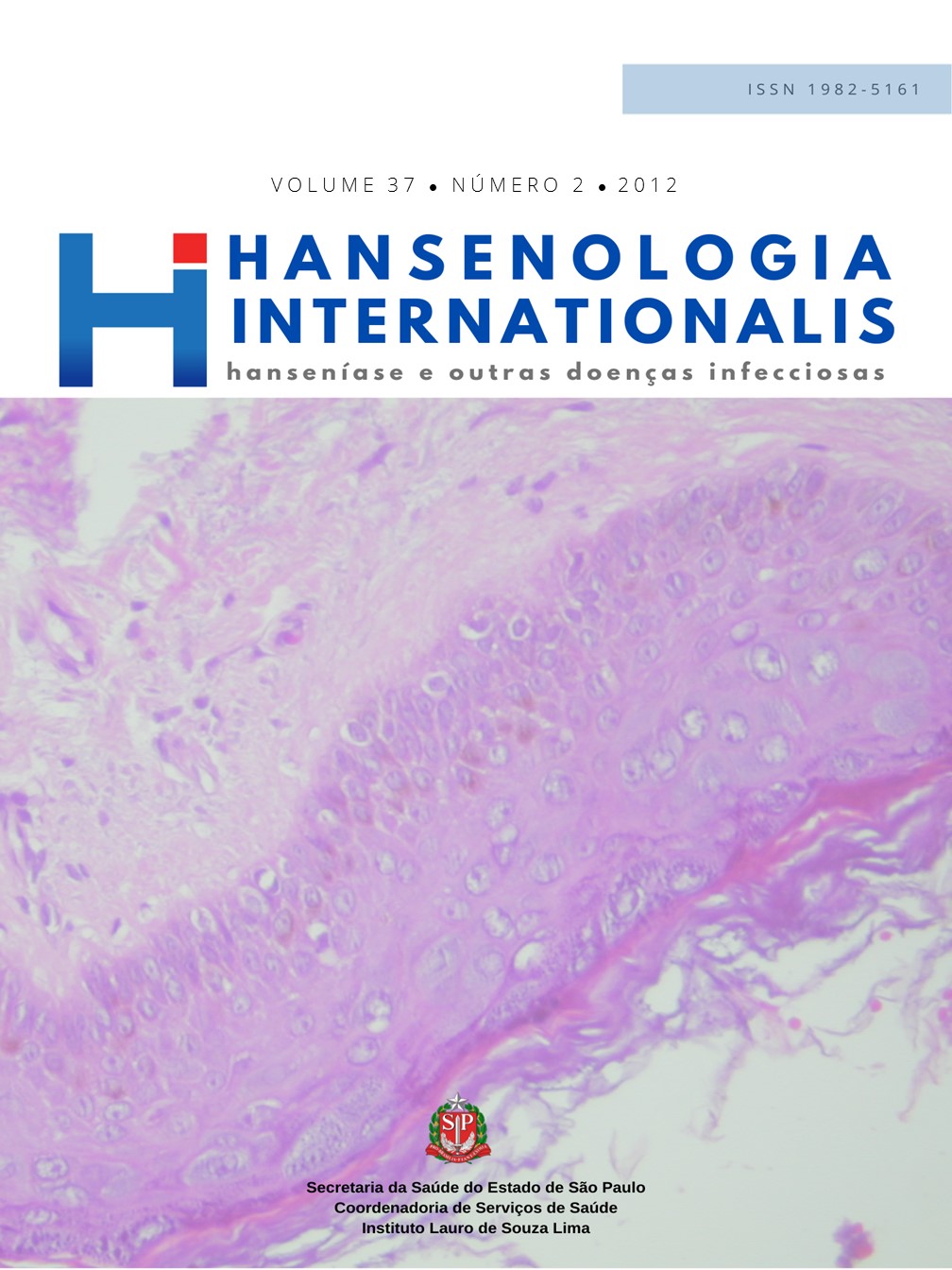Resumo
A hanseníase é uma doença infecto-contagiosa de evolução crônica que se manifesta principalmente através de sinais e sintomas dermatoneurológicos. O objetivo deste trabalho foi avaliar a situação epidemiológica da hanseníase no município de Teófilo Otoni (TO)-MG, no período de 2001 a 2010 de forma descritiva e retrospectiva. Os altos coeficientes de detecção geral e em menores de 15 anos encontrados, mantêm o município como hiperendêmico para hanseníase, sinalizando a necessidade de intensificar as ações de vigilância epidemiológica. O percentual médio de grau 2 de incapacidade, entre os casos novos estudados no momento do diagnóstico foi considerado alto (10,1%) segundo Ministério da Saúde (MS). O percentual médio de casos novos avaliados, no momento da alta por cura, apresentando grau 2 de incapacidade física foi de 4,3%. O coeficiente de prevalência no município de TO foi considerado médio (1- 4,9/10.000hab) no período de 2001 a 2010 com exceção dos anos de 2003, 2004 e 2005 quando foi considerado muito alto (12,7; 14,1 e 12,6/10.000habitantes) respectivamente. Com relação a variável prevalência oculta, verificou-se que 526 casos de hanseníase não foram diagnosticados no município, significando que 40,3% dos doentes permaneceram sem diagnóstico naquele período, podendo atuar como fontes de contágio contribuindo para a cadeia de transmissão da doença. É necessário que o município promova e intensifique a descentralização das ações de controle da doença, desenvolva programas de capacitação para as equipes multiprofissionais da Estratégia de Saúde da Família (ESF) e estimule a busca ativa de novos casos.
Referências
2 Santos AS, Castro DS, Falqueto A. Fatores de risco para a transmissão da Hanseníase. Escola Superior de Ciências da Santa Casa de Misericórdia. Vitória, ES Universidade Federal do Espírito Santo. Programa de Pós-Graduação em Saúde Coletiva. Vitória, ES. 2008. Disponível em: http://www.scielo.br/scielo.php?script=sci_arttext&pid=S0034-71672008000700014
3 WHO World Health Organization. Global Strategy for further reducing the disease burden due to leprosy: plan period: 2011-2015. Geneva: WHO; 2010.
4 Lana FCF, Amaral EP, Lanza FM, Lima PL, Carvalho ACN, Diniz LG. Hanseníase em menores de 15 anos no Vale do Jequitinhonha, Minas Gerais, Brasil. Rev Bras Enferm. 2007;60(6):696-700.
5 Corrêa RGC, Aquino DMC, Caldas AJM, Amaral DKCR, França FS, Mesquita ERRBPL. Epidemiological, clinical, and operational aspects of leprosy patients assisted at a referral service in the state of Maranhão, Brazil. Rev Soc Bras Med Trop. 2012;45(1):89-94.
6 Penna MLF, Grossi MAF, Penna GO. Country profile: leprosy in Brazil . Lepr Rev. 2013;84(4):308-15.
7 Morais SG, Malaquias LCC, Branco AC, Escalda PMF, Lana FCF. Avaliação das ações de controle da hanseníase no Município de Governador Valadares, Brasil, no período de 2001 - 2006. Hansen. Int. 2010;35(2):17-25.
8 Ministério da Saúde (BR), Secretaria de Vigilância em Saúde. Departamento de Vigilância Epidemiológica [Internet]. Brasília: Ministério da Saúde. [citado em 2012 Jun 10]. Disponível em: http://www.saude.gov.br/
9 Lana FCF, Amaral EP, Franco MS, Lanza FM. Estimativa da prevalência oculta da hanseníase no Vale do Jequitinhonha Minas Gerais. Rev Min Enfem. 2004;8(2):295-300.
10 Souza VB, Silva MRF, Silva LMS, Torres RAM, Gomes KWL, Fernandes MC, et al. Perfil epidemiológico dos casos de hanseníase de um centro de saúde da família. Rev Bras Promoção de Saúde. 2013;26(1):110-6.
11 World Health Organization. Guide to eliminate leprosy as a public health problem. Geneva: WHO; 2000.
12 Opromolla PA, Dalben I, Cardim M. Análise geoestatística de casos de hanseníase. Rev Saúde Pública. 2006;40(5):907-13.
13 Silva AR, Santos ARR, Santos GMC, Silva VEB, GonçalvesEGR. Hanseníase em Buriticupu, no Estado do Maranhão: busca ativa na população geral. Rev Soc Bras Med Trop. 2012;45(2):27-33.
14 Selvasekar A, Geetha J, Nisha K, Manimozhi N, Jesudasan K, Rao PSS. Childhood leprosy in an endemic area. Lepr Rev, 1999;70(1):21-7.
15 Ferreira IN, Alvarez RR. A. Hanseníase em menores de 15 anos no município de Paracatu - MG. Rev Bras Epidemiol. 2005;8(1):41-9.
16 Ministério da Saúde(BR), Secretaria de Vigilância em Saúde, Departamento de Vigilância Epidemiológica. Relatório de gestão da Coordenação Geral do Programa Nacional de Controle da Hanseníase - CGPNCH : janeiro de 2009 a dezembro de 2010. Brasília: Ministério Público; 2011.

Este trabalho está licenciado sob uma licença Creative Commons Attribution 4.0 International License.
